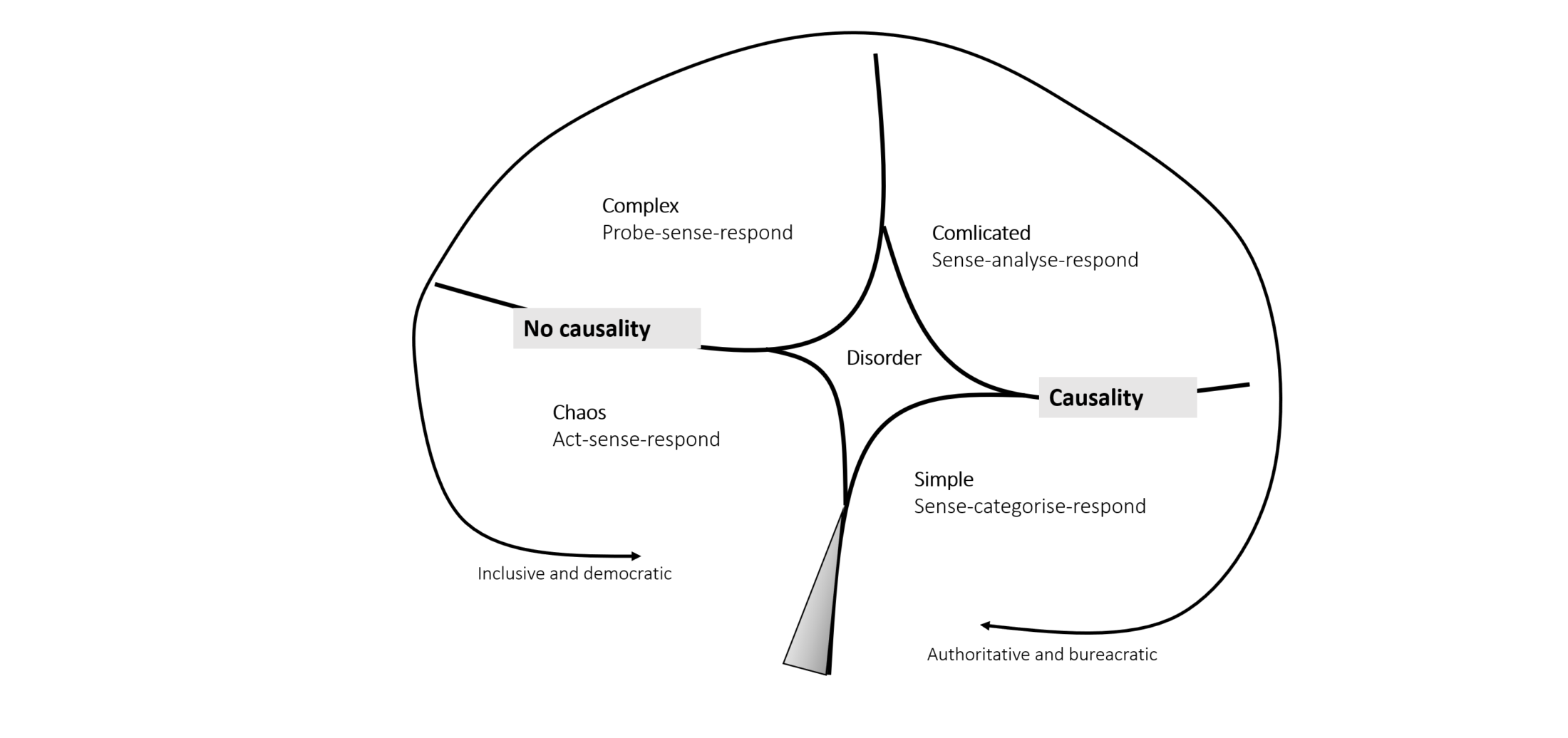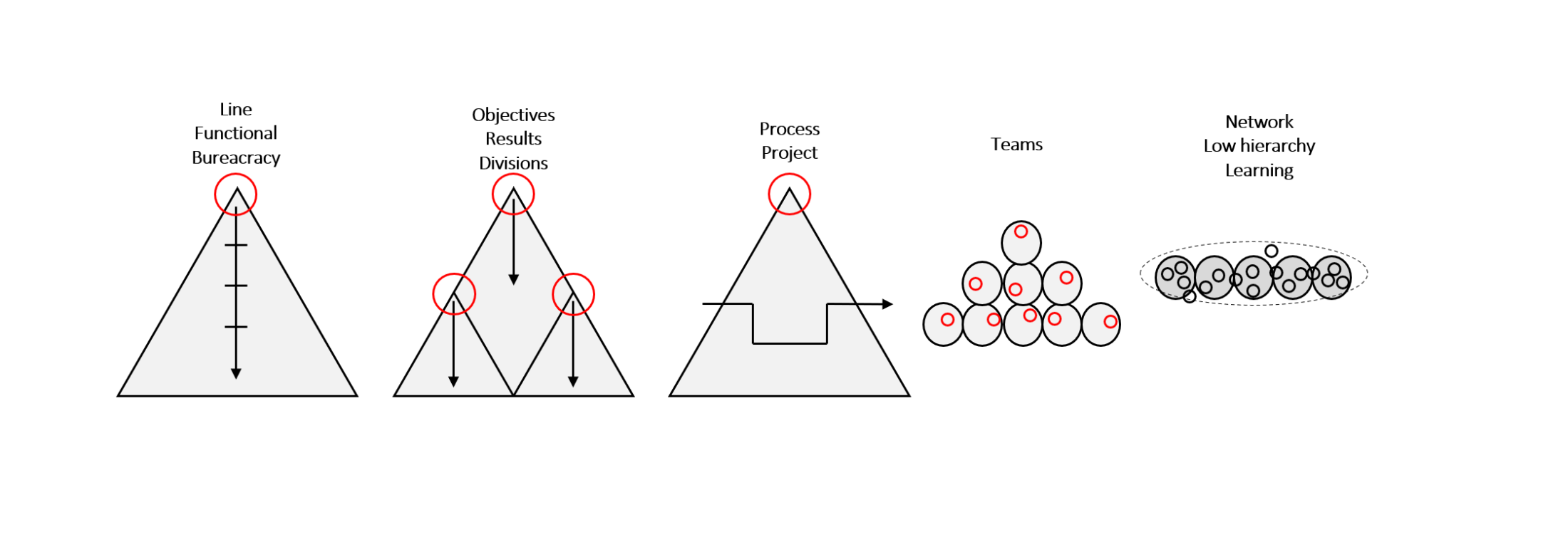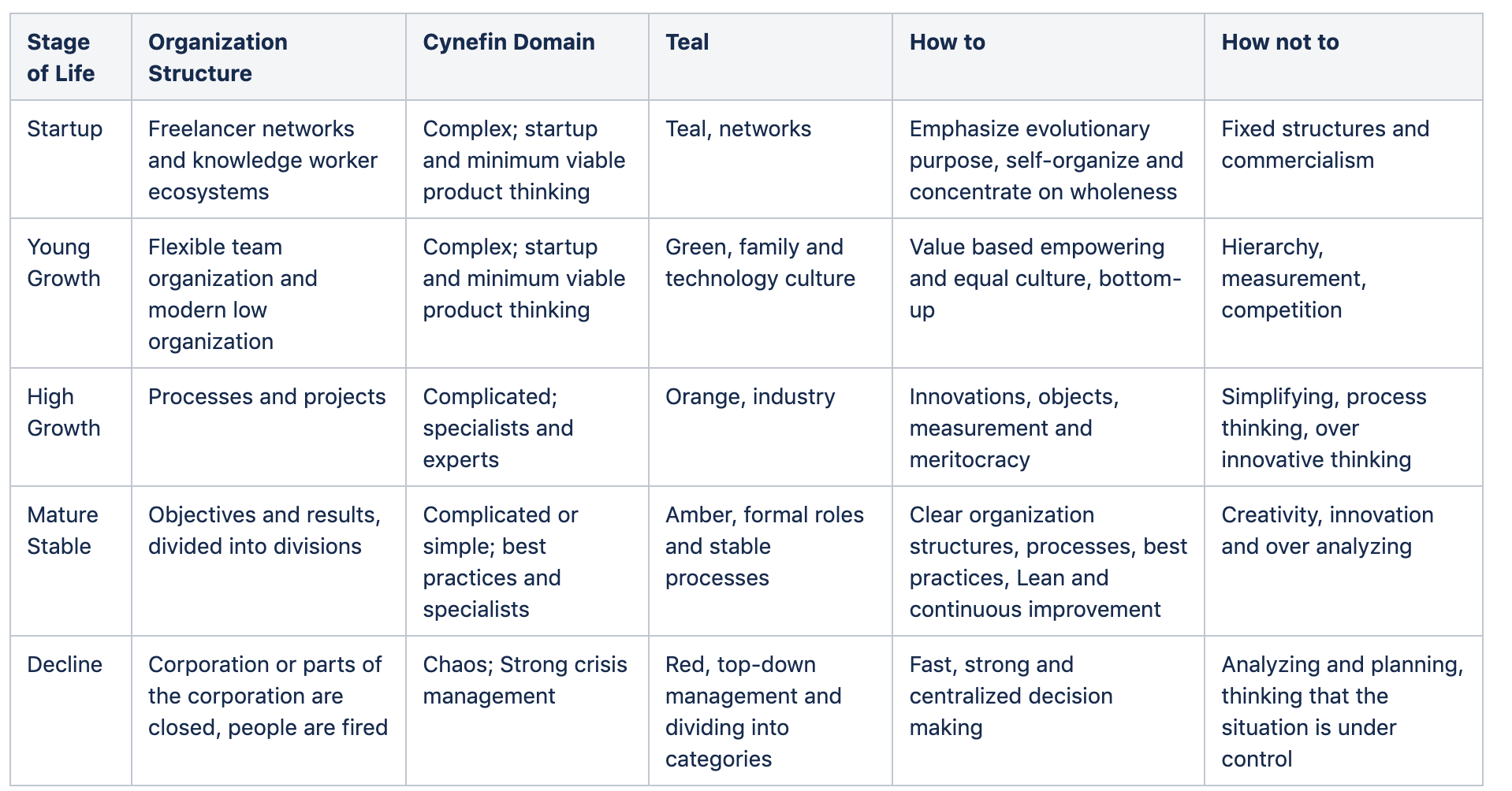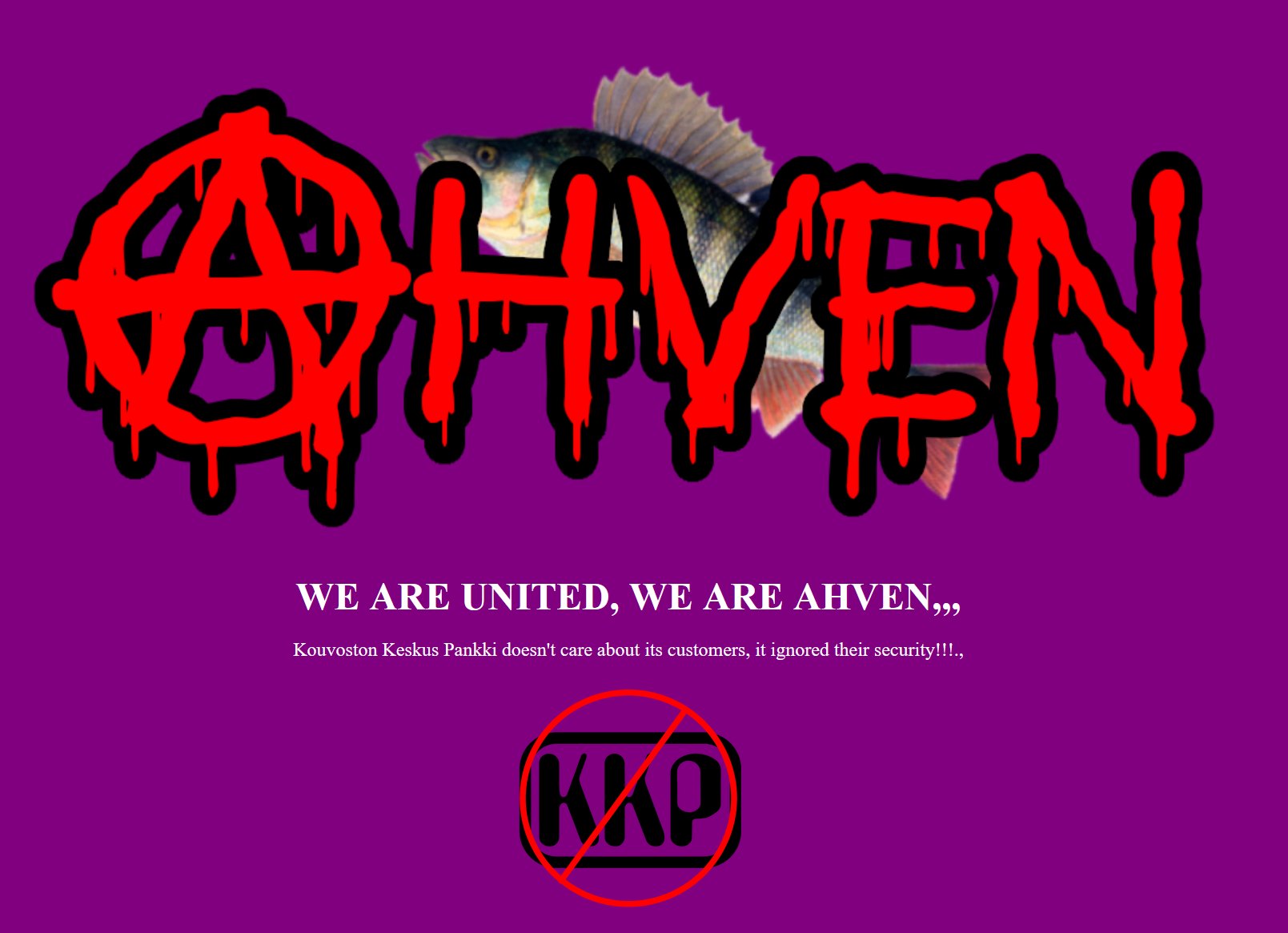Reinventing Organizations by Frederic Lalouxin represents different organization types or levels. The book has been criticized being non-scientific and even dangerous. In management that is often a sign of something new and powerful. A new ways of thinking. I’ve written about Teal in my blogbuster Scrum is Dead article, where I found similarities between Team of Teams by McChrystal, Holacracy by Robertson and Teal. All of them encourage to organize modern knowledge work similar ways.
Corporate Life Span
Aswath Damodaran gave an incredible presentation in the Nordic Business Forum 2018. Yes the same event where the founder of Skype Niklas Zennström interviewed Barack Obama. Obama ❤️. Damodaran has a theory that corporation should change it management structures and leadership style throughout its life span. Startup seeks for idea and funding. Growth company acts like a teenager trying all sort of stupid. While the corporation matures, it starts to seek efficiency and predictability. And finally a retiree corporation will be either split and ramped down or kicked back into life by the means of disruption. In tech industry the speed of life is much faster than in a traditional area. One may say that tech ages in dog years. It seems an obvious idea, that a corporate must be run differently depending on its stage. Especially while it is growing. But how often does the mature corporate settle for it slow decline, while they should instead spin off new disruptive business platforms.

Cynefin
Yes, you know me. I’m a cynefin fanboy. Cynefin is a decision making and sense-making tool that emphasizes understanding the operational environment. The framework has five stages. Stages on left are nonlinear. There is no causality between cause and effect. Cause and effect can only be deduced in retrospect, and there are no right answers. In these domains you need strong leadership and daring. Stages on right are linear. You can predict the cause-effect causality. These stages require management and optimization. I will probably abuse Cynefin crudely while presenting it alongside static corporate structures. However, I feel that Cynefin helps to understand features and needs presented by different organizational stages.

Organization Structure
The task of an organization structure is to serve a strategy. Strategy is a plan how to succeed in a certain operational environment. Success is often defined in comparison to competitors. If a company finds a totally new business area it is called a blue ocean strategy. A game without competition.
A bureaucratic, functional line organization succeeds great in a simple environment. Divisional unit structure and management by objectives (MBO) works in a more complicated but still linear environment. While MBO aims to achieve higher performance, Balanced Scorecard process sets objectives in respect of not only financial data but also customer satisfaction and employee development. A matrix type project and process organization structure offers more flexibility while working in a more complex domain. Cross-functional projects will be constantly started, which reshapes the organization constantly. In a truly complex domain the most flexibility and fit for purpose can be achieved by low organization models like team organization or network organization. While corporation grows older, its management also matures. Mature managers seek for command and control, which means the corporation structure generally travels from right to left in this corporation structure image.

Teal
Laloux divides types of structuring and leading organizations into five boxes.
- The most primitive and impulsive organizations where authority is shared by power top-down and strong division of labor is followed. RED
- Hierarchical organization with strong processes and formal roles. AMBER
- Achievement, object and result oriented organizations emphasizing accountability and meritocracy. ORANGE
- Value-driven organizations with culture and empowerment centric ways of working. GREEN
- Self-organizing evolutionary organizations. TEAL.
Laloux makes is sound easy to run an evolutionary, constantly changing and self-organizing corporation. That is far from truth. Both, the mature work force and the mature managers seek for stability. So called teal organization is a fit for purpose for a young and enthusiastic growth company. But when the company evolves it grows old.
Combination of Cynefin, Teal and Organization Structures
When playing around with domains, organization structures and leadership types one starts to find similarities. We are talking about same things from different viewpoints. Maturity brings in optimization and to be able to optimize one needs to create clear, hierarchical processes. Innovative growth company needs flexibility and constant flow. This can be achieved with modern, low organizational models.

How to Run a Corporate 101
Once you find similarities between different theories it is rather straightforward to create a synthesis of how to run things in different domains and in different stages of corporate lifespan.

Summary
Management theories and frameworks are tools. Tools are useful when used for the right purpose. Different people may invent the same tool a bit differently. It does not matter what you call the tool, as long as it is fit for purpose. As a manager you should use 80 % of your time for thinking “how to do the right things”. The structures and processes, “how to do things right” will evolve spontaneously, while you just concentrate on the matters that matter the most.
Jari Hietaniemi



